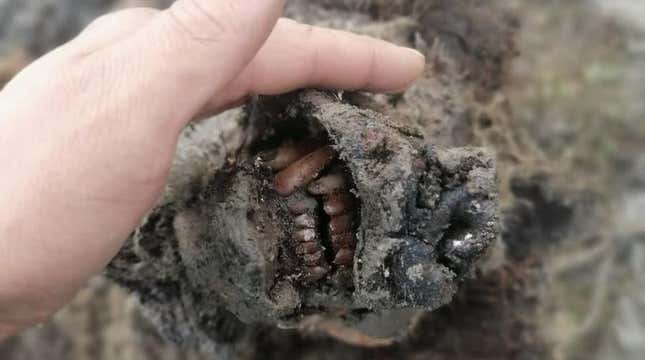
Reindeer herders working on Bolshoy Lyakhovsky Island in arctic Russia have stumbled upon an incredibly well-preserved cave bear, in what scientists say is a discovery of “world importance.”
When it comes to studying extinct cave bears, paleontologists have traditionally dealt with scattered bones and the odd skull. That’s why this new discovery is so important, as the body of the adult cave bear is “completely preserved” with “all internal organs in place including even its nose,” as scientist Lena Grigorieva explained in a North-Eastern Federal University (NEFU) press release describing the specimen. The finds are of “great importance for the whole world,” she added.

The carcass—now the only known fully intact adult cave bear—was discovered by reindeer herders on the island of Bolshoy Lyakhovsky, which is located in arctic Russia between the Laptev Sea and the East Siberian Sea. Bolshoy Lyakhovsky is the largest of the Lyakhovsky Islands—a part of the New Siberian Islands archipelago.
Cave bears (Ursus spelaeus) went extinct just prior to the end of the last ice age some 15,000 years ago, though possibly as early as 27,800 years ago. Cave bears and modern bears diverged from a common ancestor around 1.2 million to 1.4 million years ago. They were quite large, weighing upwards of 1,540 pounds (700 kg), and were possibly omnivorous.
A preliminary estimate places the age of the newly discovered cave bear at between 22,000 and 39,500 years old. This large window needs to be constrained, and that’ll hopefully be accomplished by a radiocarbon analysis, as senior researcher Maxim Cheprasov from the Mammoth Museum laboratory in Yakutsk explained in the NEFU press release.
The remains will be studied by NEFU researchers in Yakutsk, along with Russian colleagues and international collaborators who will be invited to join the study. Possibilities for research are wide open: isotopic analysis of teeth could point to diet and geographical range; DNA analysis could offer new insights into its evolutionary history and unique genetic traits; and an analysis of its stomach contents could likewise shed light on its diet. It would be good to know, for example, if this beast was an obligate herbivore or an opportunistic omnivore like the modern brown bears it resembles.
In a separate but related discovery, a well-preserved cave bear cub was found on the mainland of Yakutia. Indeed, discoveries from arctic Russia seem to be increasing in frequency as the permafrost melts in Siberia. Recently, ice age lion cubs were found in Yakutsk, and an analysis of their DNA revealed more about the family tree of these extinct creatures.